|
I really hate being a packhorse. But when I shoot wildlife, travel, ruins, or interiors for a client, I need heavier equipment. More of it. And a way to carry it. Leave The Kitchen Sink At Home I need to decide what I’m bringing first. That choice is easier if I’m shooting a specific sport, event, or wildlife subject. I always pre-visualize shots and bring just what I need. And I expect to use one set of cases to get there, and different cases (or none) once I’m at the venue. Sports – Pro Mountain Bike Races At bike races, I’m either going to be almost eyeball-close or 10-20 feet away. Competitors’ faces will be shadowed by helmets. And it’s going to be wet and muddy or dry and dusty.  Eyeball-close – racers pass less than 5 ft overhead Mountain Cross, 2002 Sea Otter Classic Nikon D1H, Sigma 15-30mm f/3.5-4.5 I have two tasks – getting equipment there, and actually shooting the races. For shooting I’ll have one dSLR body with 24-70mm f/2.8L and a second dSLR with 70-200mm f/2.8L IS. Both cameras will have shoe-mounted flash on to fill helmet-shadowed faces. I may also be carrying a 400mm f/4 DO IS lens for mass race starts. I’ll have a camera backpack (mine’s an old Tamrac Extreme 777 that’s no longer made) and a holster case to get it all there. 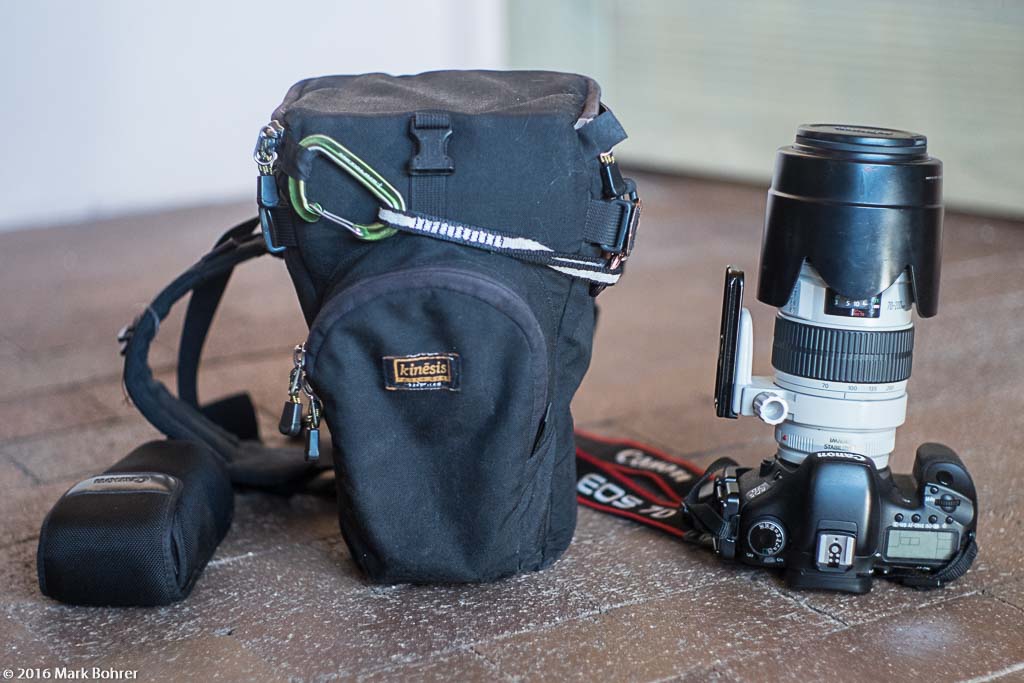 Kinesis Gear C600 holster case, EF 70-200mm f/2.8L IS on EOS 7D 430EX flash in case at left. Small carabiners clip to my belt as failsafe. Ditch The Cases – Wear The Cameras On the course, I’ll assemble cameras, lenses and flashes. I’ll choose ISO for action-stopping shutter speeds, set cameras for aperture-priority exposure, set flashes for high speed sync (HSS), make sure all lenses are set to autofocus, and double-check who the top-seed competitors are. Then I’ll sling both cameras around my neck. I might also shoot competitors walking around the course for a pre-race check. In any case, the camera backpack stays on the ground while I move around a specific part of the course. This is easiest on a dual slalom course, especially when I have a press credential. There won’t be much in the backpack once the cameras are around my neck, so I don’t worry much about theft. The holster case with spare batteries and memory cards stays around my waist. Since mass-start cross-country (XC) events usually happen on different days from the downhill and dual slalom gravity events, I can carry the 400mm in its own big lens ‘pouch’ on XC days and leave it in my car for the gravity events. I use Kinesis Gear’s shoulder strap on their E870 case to carry it. I used to attach that case to a waist belt, but the attachment points eventually ripped out of the case. 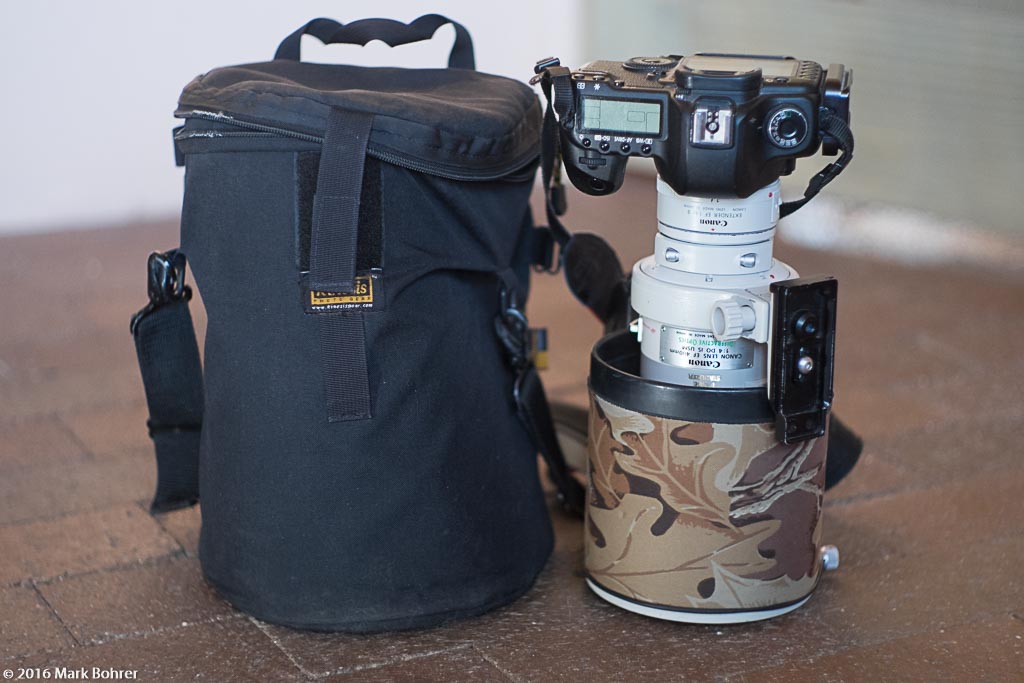 Kinesis Gear E870 Lens Pouch & strap EF 400mm f/4 DO IS and EF 1.4X II teleconverter on EOS 5D mk II Your new gear will look cleaner than mine… I try to remember where I left the backpack so I can retrieve it and repack when I’m done. At one Sea Otter Classic race, I spent 20 minutes wandering around the dual slalom course looking for it after the race was over. Weatherproofing For Rain And Mud If it’s rainy or muddy, I don’t worry too much – pro-level bodies like the EOS 1, 5D and 7D series and L-lenses are all weather-sealed. My older 550EX and 430EX flashes aren’t sealed. But I’ve yet to find a usable flash protector that doesn’t get in the way. If it’s raining or muddy, I’ll mount just one flash and try to shield it with my body. I always remember I’m pre-shrunk – and some of my best shots happen in the mud. I just need to avoid dropping flash units in water. I dropped a 430EX into San Francisco Bay at a wedding reception once, and I can verify that saltwater definitely kills equipment. 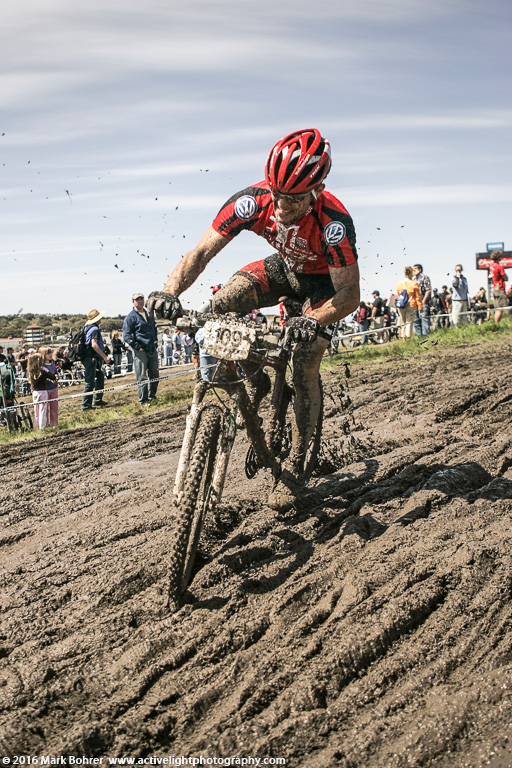 In the mud, Men’s STXC – 2006 Sea Otter Classic Events – Weddings, Parties & Political Rallies My gear for events is similar to the basics for sports – I’ll carry two dSLRs with 24-70mm f/2.8L on one and 70-200mm f/2.8L IS on another. I’ll only use one flash, since shooting setups change more slowly than for action sports and I’ll have time to switch the flash from one body to another. The dSLR and 70-200mm ride in the camera holster’s main compartment. The flash, spare camera battery and spare memory cards stash in the outer pocket. I might put the second dSLR with 24-70mm in the E870 lens ‘pouch’ to be able to carry both setups to the venue. Once I’m there, I’ll put both cameras over my shoulders and leave the cases on my body. If there’s a secure area, I’ll leave the cases there. 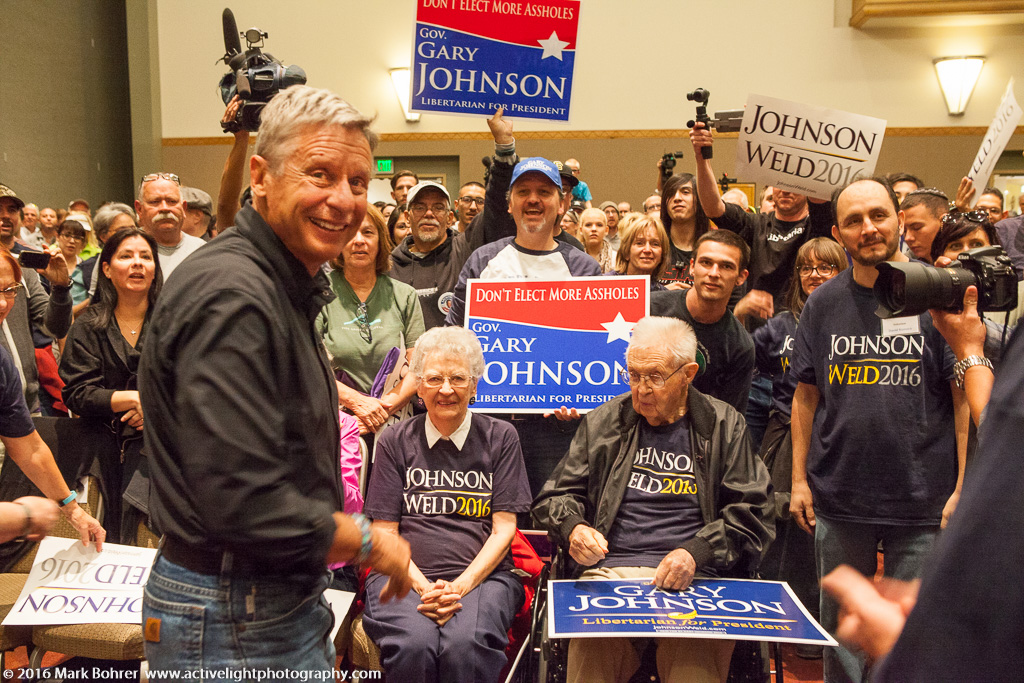 Gary Johnson Rally, UNM, Albuquerque, NM Wildlife Wildlife shots are different. I’ll carry either: 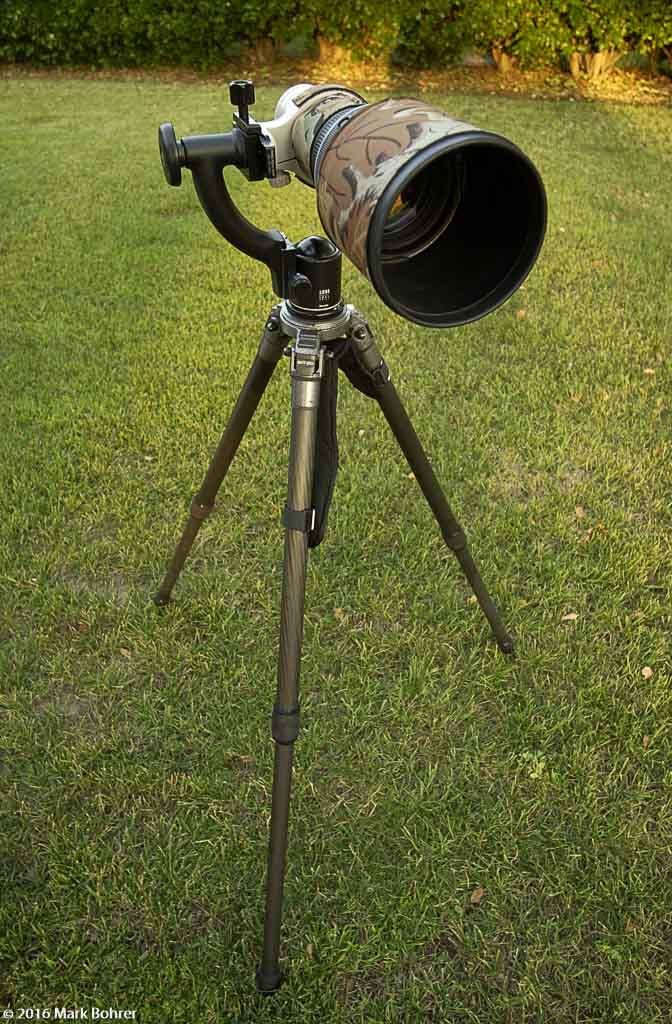 EF 400mm f/4 DO IS on Wimberley Sidekick and Gitzo G1325 mk II tripod I’ll usually carry a second camera with a 16-35mm or 24-70mm lens for sudden closeup shots. I may also carry a 550EX flash with Better Beamer flash focuser to add a catchlight or fill light for nocturnal animals like skunks and black-crowned night herons. 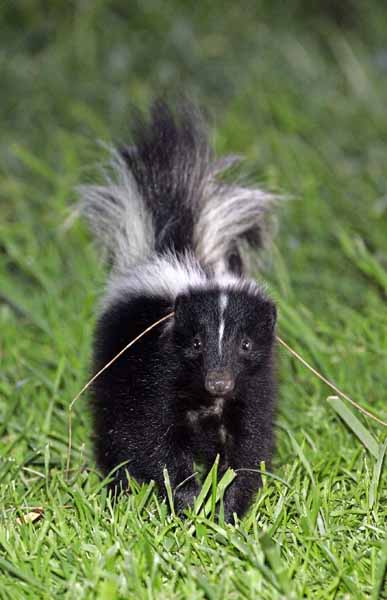 Striped Skunk surprise, Shoreline at Mountain View, California EOS 1D mk II, 500mm f/4L IS, Better Beamer flash focuser on 550EX The carrying solution for the 500mm is a long lens case with backpack harness and waist belt. I use Kinesis Gear’s L511 with the added A257 body pouch. The 500mm with EOS 1D mk II or EOS 7D body mounted goes in the case. Spare memory cards, flash, Better Beamer and an EF 1.4X II teleconverter go in the body pouch. The second camera and short zoom go in the holster case on a separate belt. I used to put the tripod in one of the L511’s pouch pockets with straps to hold it alongside. But I ended up ripping the pocket, so I hand-carry it now. 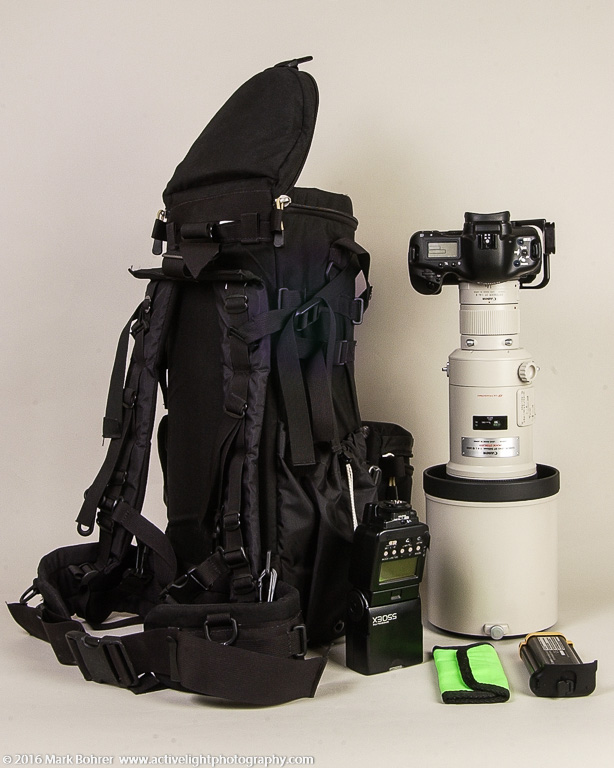 Kinesis Gear L511 long lens case with backpack straps EOS 1D on EF 500mm f/4L IS – reversed lens hood When I get to my researched shooting site (I check guidebooks, online, and with local ‘native guides’ for best locations for specific critters), I’ll set up the tripod and slide the 500mm’s Arca plate into the Sidekick until it’s balanced. Properly balanced, camera and long lens move and track with just fingertip pressure. I’ll leave the case on the ground nearby. I don’t worry about theft on Great Salt Lake’s Antelope Island, California’s Owens Valley or other remote sites. And that second dSLR with short lens comes in handy. Shooting the tripod-mounted 500mm at the Palo Alto Baylands egret rookery in California, I watched a ranger retrieve a nestling that fell out of its nest. As she got closer with the nestling, I paused to capture the scene with the second camera and short lens. It’s all about telling the story – and the ranger and rescued bird added a human element.  Ranger Bonnie Nattrass and rescued snowy egret nestling Palo Alto Baylands And what about travel / ruins? And interiors? Stay tuned for next week’s blog! Cases I Use Camera backpack – Tamrac Extreme 777 (no longer made) Camera holster (dSLR body & 70-200mm f/2.8L iS) – Kinesis Gear C600 Lens ‘pouch’ (dSLR body & 400mm f/4 DO IS) – Kinesis Gear E870 Long lens case (dSLR body & 500mm f/4L IS) – Kinesis Gear L511 |
(408) 483-3782
Curious about how to shoot ruins?(408) 483-3782

Recent Comments